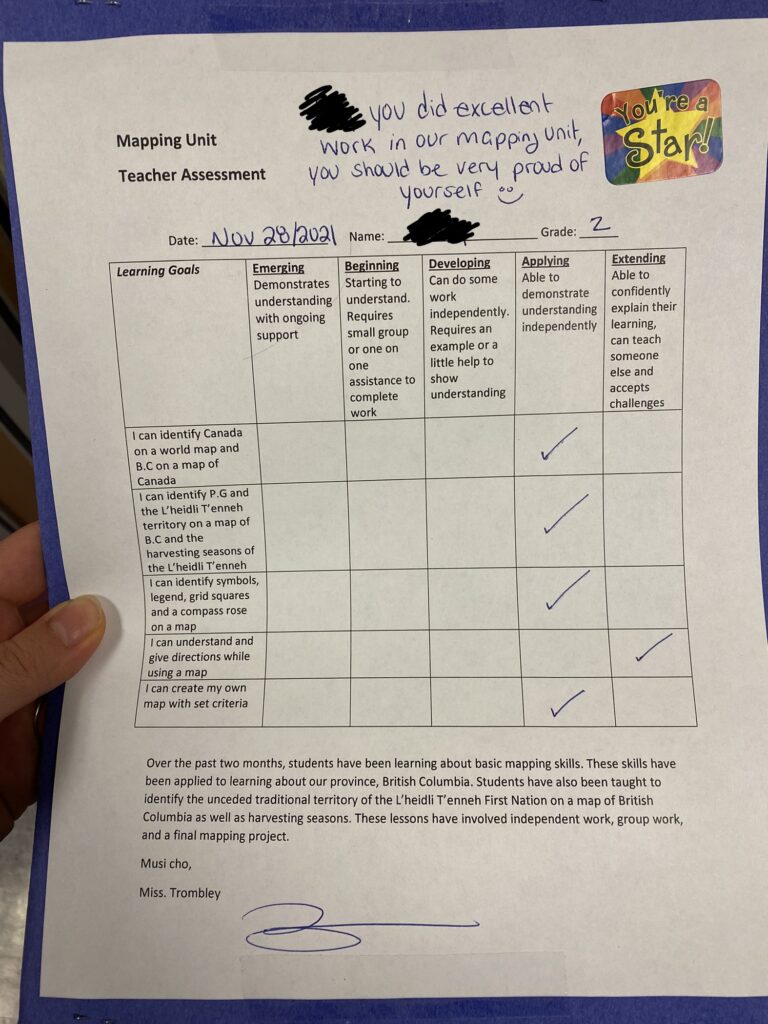A few links to start with or refer to:
Transforming Assessment – BC’s New Curriculum
https://curriculum.gov.bc.ca/node/88
BC’s K-12 Assessment System – BC’s New Curriculum
https://curriculum.gov.bc.ca/assessment
Dylan Wiliam – YouTube – Assessment for Learning
https://www.youtube.com/watch?v=hiu-jY-xaPg
Dylan Wiliam – YouTube – Assessment Strategies
https://www.youtube.com/watch?v=YcJdZGz6ifY
Dylan Wiliam – YouTube – Formative Assessment
https://www.youtube.com/watch?v=sYdVe5O7KBE
Assessment: The Bridge Between Teaching and Learning – from Voices in the Middle, Volume 21, Number 2, December 2013
https://www.ncte.org/library/NCTEFiles/Resources/Journals/VM/0212-dec2013/VM0212Assessment.pdf
Assessment for Learning, November 29th, 2021
Assessment for learning is something I have been continuously working on throughout the program as well as my practicums. In practicum 491, I was able to do much more assessment work with my students because I was with the class for ten weeks. During those ten weeks, we completed a unit in math (Number sense skills), a unit in Science (Landforms, erosion, and deposition), a unit in ELA (Story elements) and a unit in Socials basic mapping skills). Throughout each of these units, student work was accumulated and marked and placed in their individual subject folder. These folders were kept organized by myself, so I could keep track of who finished what, who was absent, and who needed more support or challenges in their learning. Before my final practicum started, I was unsure how to monitor and track student learning because I was having a difficult time jotting down notes during lessons and work time to reflect on later. I noticed most of my notes were observational, and that the work they handed in would be evidence of their learning.
Before each unit began, I sat down with my coaching teacher to develop criteria together (learning intentions/outcomes). Each student would be expected to fulfill these learning intentions/outcomes (“I can” statements) to the best of their abilities. During parent teacher meetings, students were able to show their current work and explain what they were learning to their parents. Each child’s learning was supported, and they were given the resources or adaptations they needed to be successful. At the very end of the unit, when final projects or assignments were finished, the assessment rubrics were filled out. Each student received a check mark in either Beginning, Emerging, Developing, Applying, or Extending for the “I can” statement. Each student also received a personalized note for their learning. I have attached some pictures below as assessment samples for Science.
Throughout this practicum, I have learned some strategies that work best for me when keeping track of students learning progressions and assessments for learning. I look forward to the various strategies I will find along the way when collaborating with future colleagues and peers.

